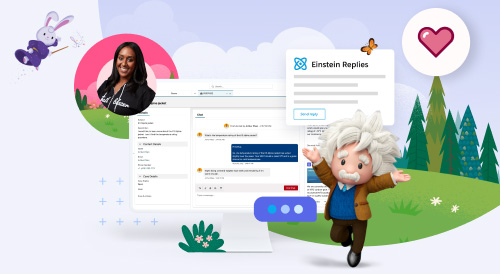Ensuring a consistent, cohesive customer service experience across all touchpoints is one of the biggest challenges that many businesses face. This can be particularly difficult when it comes to refunds or returns for example, where multiple teams or systems are involved. A customer may have to navigate several touchpoints to resolve the issue. That can be frustrating and time-consuming, leading to a negative perception of the brand. Fragmented processes can also increase the cost of providing customer service.

65% of Indian respondents felt they were communicating with separate departments, not one company. Further, 73% agreed they often had to repeat or re-explain information to different representatives.
To address these challenges and deliver excellent customer service, companies need to invest in technologies and processes that enable them to get a 360-degree unified view of their customers and their buying patterns.
Cut costs and reduce complexity with a shared customer view
A unified customer view requires moving away from fragmented data capture and ensures that teams are equipped with details like:
Customer profiles and demographics
Customer journey analytics
Marketing channel interactions
Registrations and preference management data
Repeated engagements
Support tickets raised
Project statuses
Sales representatives’ interactions
Behavioural data
A single-view of all this data helps the customer service function to effortlessly move from being a cost centre to a profit centre. It improves team collaboration and increases operational efficiency and service quality.
Let’s take a closer look at how a unified customer view improves customer service:
1. Integrates data from all sources
2. Enables personalised service
Did you know that 83% of customers expect to interact with a single person who can help them resolve complex problems? This is why using AI and machine learning algorithms to automatically catalogue products, content, and customer data can be a game-changer for you. With this, your service agents can provide relevant responses and tailored experiences that cater to individual needs. They can also personalise product recommendations according to customer preferences, leading to increased sales and customer satisfaction.
The use of AI in customer service also helps to integrate service requests from all channels and assign them to the relevant customer service agents, driving operational efficiencies at scale. No wonder the percentage of decision-makers who report using AI has increased by 88% since 2020.
Explore how unified customer views are reshaping the customer service landscape
3. Reduces costs
One trusted platform to help you connect the dots between your customer data and exceptional customer service
Using a single service CRM tool for the entire organisation enables a unified customer view. A service platform with native AI +Data+CRM capabilities brings real-time data and market intelligence together. This helps organisations achieve enhanced operational efficiency and greater cost reduction. By leveraging the power of AI and automation, an agile CRM platform helps you build and maintain the customer relationships that grow your business and also achieve service efficiency at scale, equipping you with a 360° view of your customer, so that you always know what to do now, and what to do next.
Solutions like Salesforce Service Cloud can enhance agents productivity, cut down service costs, and scale service that your customers love. Using AI, automation and real-time data, service agents can deliver contextually relevant experiences, predict the customer's ideal next step based on their interests, and provide customised recommendations.
Learn how global leaders are driving cost efficiency and meeting real-time customer needs
Read more about transforming your customer service with these blogs:
3 ways generative AI will reshape customer service
Human customer service vs automation: Is your business making the right choice?





